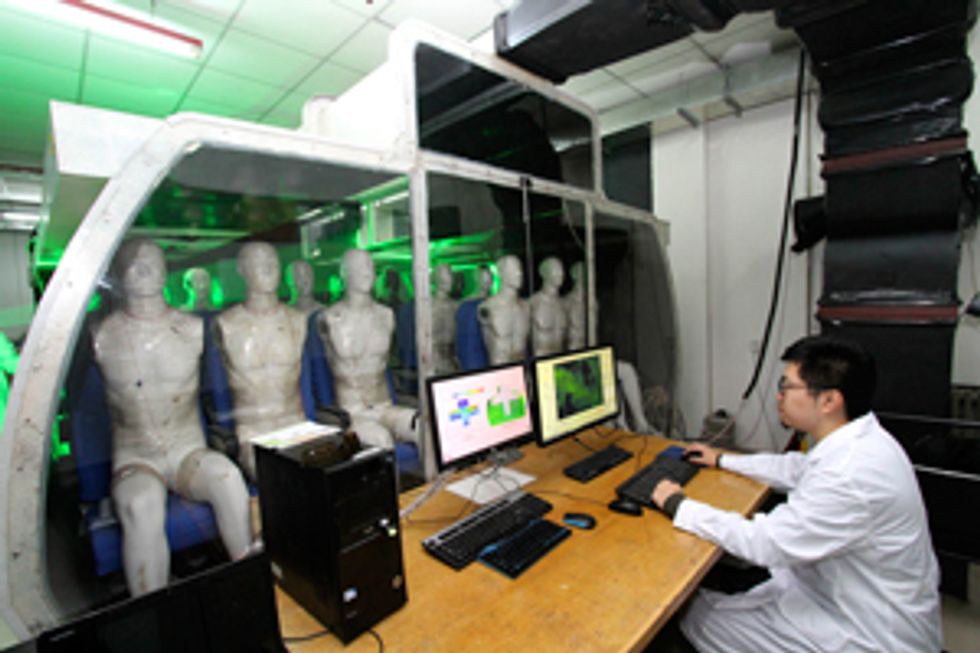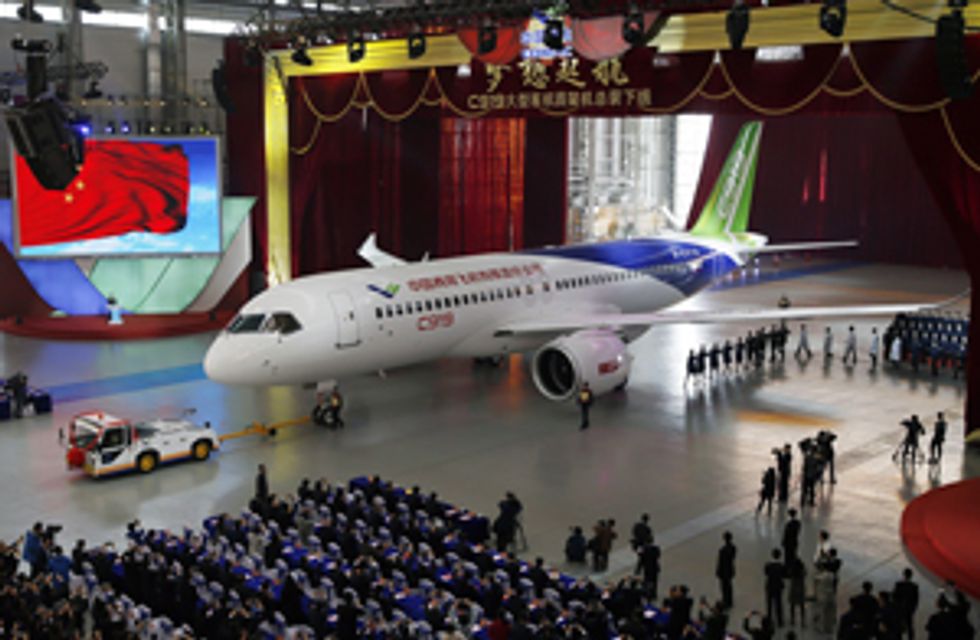China’s Comac to Challenge Boeing and Airbus
The company’s C919 airliner is slated to begin flight tests soon

The C919, China’s answer to the Airbus A320 and Boeing 737, is slated to have its first test flight somtime in 2016. Built by the Commercial Aircraft Corporation of China (Comac), the twin-engine airliner had its celebratory rollout in November of 2015 in Shanghai. But even if the upcoming flight-testing goes well, don’t expect to fly on a C919 right away. Indeed, if you live in Europe or the United States, don’t expect to even see one at your local airport.
Although the C919 is a homegrown Chinese creation, the aircraft isn’t completely Chinese. Comac uses many of the same U.S. and European components as Boeing and Airbus do in their 737 and A320 airliners, including Honeywell’s flight-control system, Parker Aerospace’s hydraulic equipment, and Liebherr’s landing gear. But like Boeing and Airbus, Comac has the responsibility of ensuring that all those systems—and many more—work together smoothly. And that’s not an easy task: Problems with systems integration contributed to the lengthy delays with China’s ARJ21, a regional jet that first went into development in 2002 and will go into widespread commercial service only in 2016—eight years later than originally planned.
Wu Guanghui, vice president at Comac and chief designer of the C919, says his company does recognize that systems integration is a key challenge, which is why Comac built a fully functioning “iron bird” in 2014. Housed at the Shanghai Aircraft Design and Research Institute, this prototype is used to test various subsystems and moving parts, including the landing gear, rudder, horizontal stabilizers, elevators, slats, flaps, ailerons, and spoilers.
Matter of Fact
Pricing has not been announced, but the C919 is expected to cost about US $50 million, much less than Boeing’s 737-800 ($96 million) and the Airbus A320 ($97 million).
Like a proud parent, Wu extols the plane’s virtues: “The aircraft uses the very best of domestic and foreign resources, and was designed and made in accordance with international standards,” he declares. Maybe so, but there can still be surprises. Sometimes it becomes apparent only after rollout that an aircraft is overweight, as Boeing learned with its 787. And the initial batch of ARJ21 aircraft that Comac built were also heavier than anticipated, forcing the company to go back to its suppliers seeking ways to shave off kilograms.
Weight is critically important because the heavier an aircraft is, the less fuel efficient it is. And airlines, of course, want the most fuel-efficient aircraft they can get. So if the C919 is too heavy, it will be hard to sell.
Comac is a state-owned company, and nearly all of the orders for C919s are from other Chinese state-owned firms. The lone exception at this point is U.S.-based GE Capital Aviation Services (GECAS). And it may be no coincidence that GECAS’s sister company, GE Aviation, owns 50 percent of CFM International—the sole engine supplier to the C919 program with its CFM LEAP-1C engine.
In 2008, when the C919 program was launched, Comac hoped that the LEAP engine would give the C919 greater fuel efficiency than the A320 and 737NG, which are powered by the CFM56 engine, an older and less fuel-efficient design. But since then, Airbus and Boeing have come out with the A320neo and 737 MAX, which are both powered by the LEAP engine, thus negating the C919’s competitive advantage.

So far, Chinese aircraft makers have been unable to get even a single commercial plane certified by either the United States’ Federal Aviation Administration or the European Aviation Safety Agency (EASA). And that losing streak is unlikely to end with the C919, because the plane was designed and built with no involvement from either the FAA or EASA. To gain such certification, a company normally needs to include the regulators from the get-go. And without FAA or EASA certification, it will be nearly impossible for Comac to succeed in selling its aircraft abroad.
Hugh Newman, technical director at the Bank of China’s aircraft leasing company, BOC Aviation, points out another reason why you’re not going to see many C919s outside of China anytime soon: “They don’t have the international customer-support network. It is something that has taken Airbus and Boeing decades to develop, and it’s not something that can be replicated in a few years.”
Will Horton, senior analyst at the Australian-based Centre for Aviation, says that, apart from its domestic market, Comac will be limited to selling the C919 to developing countries that are political allies of China. “We’ve seen other indigenous Chinese aircraft—such as the Xian Aircraft MA60 turboprop—acquired by foreign operators as part of broader economic and political packages,” he notes.
So if you’re an air-travel aficionado who just has to try every kind of airliner there is, you’ll likely need to buy a ticket to China, on something other than a C919, to find a seat on this new cruiser in the sky.
